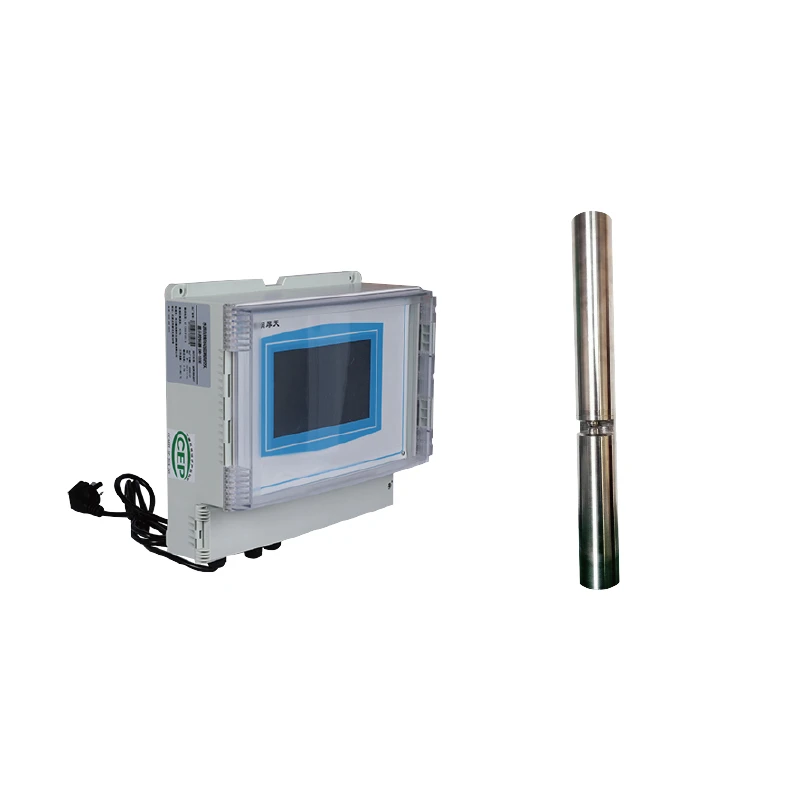High-Efficiency Micro Gas Turbine Generator for Home & Industry – Compact & Reliable Power Solution
- Introduction: Meeting Modern Energy Demands with Micro Gas Turbine Generators
- Technological Advantages of Micro Gas Turbine Systems
- Comparative Analysis of Leading Manufacturers
- Customization and Integration Strategies for Diverse Requirements
- Real-World Application Scenarios and Performance Data
- Addressing Sustainability and Grid-Microgrid Interfacing
- Conclusion: Unlocking the Full Potential of Micro Gas Turbine Generator Solutions

(micro gas turbine generator)
Introduction: Meeting Modern Energy Demands with Micro Gas Turbine Generator Solutions
In a rapidly evolving energy landscape, reliability, efficiency, and adaptability are at the forefront of power generation technology demands. The micro gas turbine generator
responds directly to modern challenges by providing distributed energy solutions suitable for both residential and commercial needs. With increasing grid instability and a global imperative to reduce carbon footprints, decentralized systems such as the micro gas turbine generator for home environments offer undeniable value. Industry projections indicate that the global micro gas turbine market will exceed $4.1 billion USD by 2030, up from $2.3 billion in 2022, signaling enormous growth, particularly in the 30–500 kW segment favored for distributed generation. Urbanization, digitization, and growing demand for combined heat and power (CHP) systems drive the adoption of micro gas turbines, with notable efficiency gains over conventional power generation setups. This landscape sets the stage for a deep dive into the technical and economic rationale for integrating micro gas turbine solutions.
Technological Advantages of Micro Gas Turbine Systems
Micro gas turbines leverage continuous combustion processes and advanced materials, resulting in impressive operational metrics. Typical electrical efficiencies range from 27% to 33%, with total system efficiencies surpassing 85% in cogeneration (CHP) configurations. Compared to reciprocating engines, micro gas turbines offer lower maintenance due to fewer moving parts and reduced vibration, enhancing operational lifespan. Start-up times can be as rapid as 60 seconds, catering to demand-response applications and backup scenarios. Fuel flexibility is another hallmark: micro gas turbines accommodate natural gas, biogas, diesel, and synthetic fuels, enabling clean energy transitions and future-proofing investments. Emission profiles are highly favorable, with NOx emissions below 9 ppm and negligible particulate output, complying with the world’s strictest urban air quality standards. Their modularity and compact footprints allow integration in retrofits and new-builds, supporting rooftop or basement installations within space-constrained properties.
Comparative Analysis of Leading Manufacturers
Selecting the optimum micro gas turbine generator involves careful comparison among top-tier manufacturers. Below is a comparative table featuring performance and specification metrics of key global players:
| Manufacturer | Model | Power Output (kW) | Electrical Efficiency (%) | Total CHP Efficiency (%) | Fuel Types | Annual Maintenance Cost (USD) | NOx Emissions (ppm) |
|---|---|---|---|---|---|---|---|
| Capstone | C65 | 65 | 33 | 86 | Natural Gas, Biogas | 5,200 | <9 |
| Turbec | T100 | 100 | 31 | 85 | Natural Gas, LPG | 4,800 | ~15 |
| Bladon | MTG12 | 12 | 28 | 82 | Diesel, Kerosene | 2,950 | ~10 |
| FlexEnergy | GT333S | 333 | 29 | 83 | Natural Gas, Biogas | 13,400 | <12 |
| Dresser-Rand | MicroGen | 80 | 32 | 84 | Natural Gas, Synthetic Gas | 6,750 | ~11 |
Across these models, the variations in efficiency, emissions, and maintenance overheads reflect the breadth of engineering priorities—helping buyers match technical attributes with local regulatory or operational conditions.
Customization and Integration Strategies for Diverse Requirements
Diverse application environments demand tailored micro gas turbine solutions. Whether for single residences, multi-dwelling complexes, or industrial facilities, customization covers output sizing, emissions controls, fuel preprocessing, and digital integration. For home users, options include inverter-based grid synchronization and home automation tie-ins for demand management. Industrial variants may incorporate advanced exhaust-heat recovery modules, boosting co-generation and tri-generation capabilities for hot water, steam, or absorption-based cooling. Digital twins and cloud SCADA augmentation have become mainstream, empowering remote diagnostics, predictive maintenance, and fleet-wide optimization. Noise attenuation measures, such as bespoke acoustic enclosures, allow deployment close to habitable zones without compromising comfort. Installers increasingly offer "microgrid-ready" packages, with direct current interconnection, battery coupling, or integration with renewables—enabling seamless participation in both grid and off-grid scenarios.
Real-World Application Scenarios and Performance Data
The versatility of micro gas turbine generators is reflected in diverse, impactful case studies:
- Urban Apartment Complex, Tokyo: A 2.4 MW micro gas turbine array services a 900-unit development, delivering 94% of annual heating and 81% of annual power needs with a 21% reduction in CO₂ emissions versus central grid supply.
- Data Center, Scandinavia: Deploys four 100 kW micro turbines in CHP configuration, maintaining Tier IV uptime standards and achieving a 34% annual energy cost reduction.
- Remote Hospital, Kenya: A single 65 kW system, fueled by locally sourced biogas, provides round-the-clock clean electricity and eliminates grid outages, maintaining uninterrupted patient care (99.98% up-time across 2 years).
- Homeowner in California: Uses a residential micro gas turbine generator for home backup, paired with rooftop PV and 20 kWh battery storage, ensuring 100% resilience during wildfire season grid outages.
Empirical field data consistently highlights reliable starts, quiet operation (as low as 60 dBA @ 10m), and maintenance intervals exceeding 8,000 hours—critical for mission-critical applications and residential peace of mind.
Addressing Sustainability and Grid-Microgrid Interfacing
Micro gas turbine technology is pivotal in achieving decarbonization and distributed energy flexibility. Fuel adaptability enables the use of renewable gases and future hydrogen blends, aligning with net-zero objectives. Robust controls allow parallel operation with existing grids, smooth islanding transitions, and black start capability—ensuring resilience during widespread outages or peak demand events. Programs across the EU and North America incentivize deployment of low-emissions micro CHP, while heat recovery optimizes local energy utilization, reducing both emissions and utility spending. Lifecycle analyses reveal up to 19% lower greenhouse impact compared to diesel generators, compounded by ultra-low local pollutant outputs. Using digital management platforms, operators can trade surplus power or ancillary grid services, monetizing excess capacity and maximizing distributed asset value.
Conclusion: Unlocking the Full Potential of Micro Gas Turbine Generator Solutions
The micro gas turbine generator combines high efficiency, fuel flexibility, and digital-ready performance across residential, commercial, and industrial segments. Rapid market growth, favorable technical metrics, and proven reliability underscore its value proposition as a cornerstone of resilient, sustainable, and distributed energy architectures. Its capacity for customization and seamless grid integration ensures outstanding adaptability for both present-day and future energy landscapes. As grid pressures intensify and emissions standards tighten, micro gas turbine technologies will continue to drive forward the evolution of decentralized power. Their adoption is not simply a technological choice, but a vital step in constructing the energy networks of tomorrow.

(micro gas turbine generator)
FAQS on micro gas turbine generator
Q: What is a micro gas turbine generator?
A: A micro gas turbine generator is a compact electrical generator that uses a small gas turbine engine as its power source. It typically produces between 20 kW and 500 kW of electricity. These systems are valued for their high reliability and low emissions.
Q: Can a micro gas turbine generator be used for home applications?
A: Yes, micro gas turbine generators can be adapted for home use. They provide efficient, reliable power and can be used for both electricity and heating (cogeneration). However, installation costs and fuel supply should be considered.
Q: What are the main advantages of a micro gas turbine generator?
A: Micro gas turbine generators are compact, have low emissions, and require minimal maintenance. They can efficiently generate electricity and heat from a variety of fuels. Their quiet operation makes them suitable for residential and small commercial settings.
Q: What fuels can power a micro gas turbine?
A: Micro gas turbines can use natural gas, diesel, biogas, or propane as fuel. This flexibility supports various energy sources and sustainability goals. The choice of fuel can affect efficiency and emissions.
Q: How does a micro gas turbine generator differ from a conventional generator?
A: Unlike conventional generators that use reciprocating engines, micro gas turbines operate with continuous spinning turbines. This results in smoother, quieter operation and lower maintenance needs. They also generally have better emissions performance.
